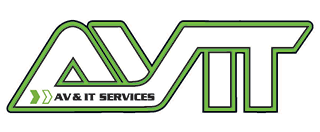As groups of individuals strive to go paperless, and companies try to avoid sending files over email for projects or archival or security reasons, and photographers needing a secure place to store and share their work from, and organizations working with people remotely all over the world needing a central storage place for file sharing, the Cloud (as it’s become known as) is where everyone is heading.
Being in the cloud saves on local infrastructure costs, IT costs, can create a more flexible and still secure solution to the ever growing problem of needing more space for all of our files!
As a business owner, it is wise to find a product that best fits your needs that you can get your entire team on board with. The few easily accessible options are Dropbox, Box, OneDrive, and if you are a Google or G Suite user, then Google Drive would be wise.
Here is another challenge. There are quite a few good options out there for cloud storage and file sharing, and the products continue to get better. If you are a light user, many of these tools are free. If you are heavy user, the cost per month, or annually, is pretty affordable, it’s difficult to pass it up. The challenge is, how many accounts do you have? Do you have an account with several of these websites? I do. I do, because my clients all use different tools and I need to be able to accept file sharing requests without a problem. I still have only one system I heavily rely on.
Be sure to consider your current ecosystem as a company and how your workflow is. Do you use a CRM in your company, and if so, does it inherently integrate with a cloud file system? Like using Google’s G Suite (formerly Google for Work), if your entire company is set up on that system for email, there is already a powerful file sharing system available, which also happens to have file creation and collaboration as well.
Just recently Dropbox released their Paper feature. This allows you to create a basic document, collaborate with coworkers or teammates, and even sync with Google Calendar to create a meeting document.
The other added benefit to these systems is the ability to access these files and edit them on a smartphone or tablet. So, if you are on the go, and are not able to whip out your laptop every time someone needs a document reviewed, simply being able to open an app on your phone or tablet and makes it a very efficient overall process. To take this another step further, if you have documents that require signatures, and an e-signature is acceptable, there are apps for that as well, which means you can keep everything paperless and shuffle large documents between people all day long.
Construction and contracting companies that view large architectural drawing files are using these types of systems to distribute documentation to subcontractors, and even using these file systems to access the files for review and while in the field. It saves from having high print costs every time there is a change to the document. Some applications allow red-lines and markups to be saved and shared as well, which makes remote collaboration a breeze.
Lastly, if you are a large company and are not sure about these subscription file services and want to keep your own, but still have the same functionality, there are ways to setup local servers, VPN access, and software programs that will give you all of the same tool sets and capabilities as these web based companies. Or, if you want your own cloud system and not have local servers, you can get setup with dedicated servers through a service.
If you are unsure which direction you need to go, give me a call or send me an email, let’s figure it out together. I can get you pointed in the right direction to meet your needs and provide you the solution all in one.


Recent Comments